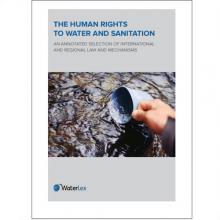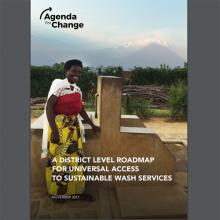
The Human Rights to Water and Sanitation: An annotated selection of international and regional law and mechanisms
For countries to flourish, it is imperative for citizens to have regular access to safe, clean, and affordable water and sanitation. The only way to guarantee this access is to ensure effective water governance through the development of well designed, workable and strong legal and policy frameworks. In this context, this handbook addresses existing water and sanitation-related international and regional frameworks. It is designed as a resource for practitioners who wish to improve water governance and contribute to the realisation of human rights to water and sanitation (HRWS) through national level law and policy which is compliance with international and regional law. Alternatively, it can be used by people who desire to bring their legitimate complaints to the international and regional human rights mechanisms. This book therefore targets civil society wishing to better inform and advocate for national level reforms, as well as actors such as parliamentarians or government officials, who want to understand the broader context of human rights to water and sanitation and strengthen their work.
The handbook contains two main parts:
- International framework (Part A)
- Regional frameworks (Part B).
At regional level four geographic areas are covered and can be referred to for specific continent-wide mechanisms and legal documents of relevance to the HRWS. These geographic areas are Africa and the Middle-East, the Americas, the Asia-Pacific region, and Europe.
Reviews
There are no reviews yet.
Be the first to review " The Human Rights to Water and Sanitation: An annotated selection of international and regional law and mechanisms "
Add a review
Implementation reports
Add an implementation report
Other tools that could interest you

A District Level Roadmap for Universal Access to Sustainable WASH Services


